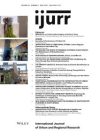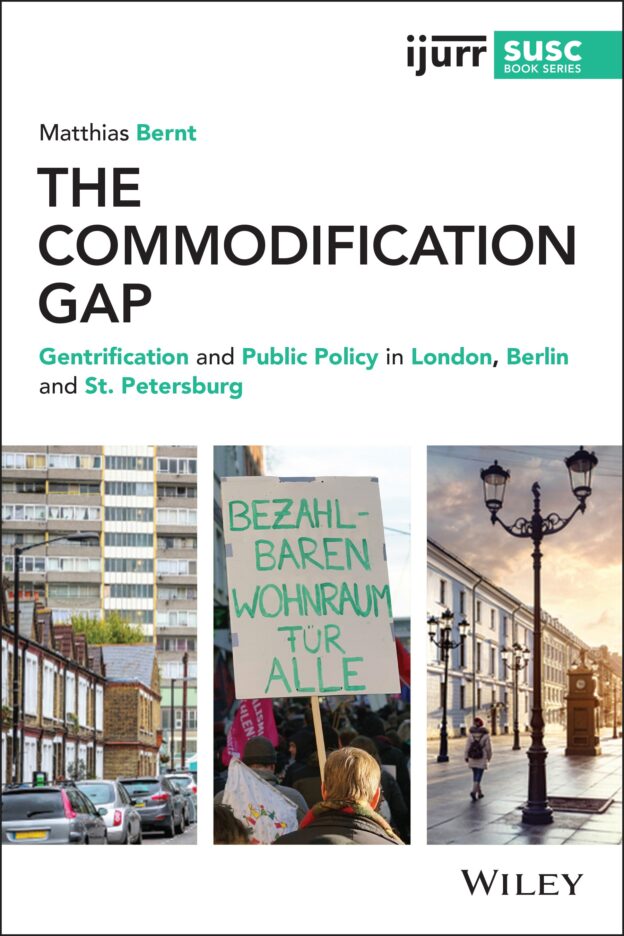Debates about the most widely used theory of gentrification—the rent gap theory—and the universally adopted metaphor of the seesaw of capital that lies at its core have grown ever louder over the last decade as gentrification research has gone truly global. This includes both generalized debates around theoretical inconsistencies concerning the role of stigmatization, for example, or continuous investment in high-status areas, as well as contextual ones, such as the historical irrelevance of disinvestment–reinvestment cycles between the city centre and the suburbs, or the limited importance of private rental housing and market processes. Within these debates, however, the majority of critics provide only idiosyncratic explanations for such peculiarities or the lack of local gentrification, while others fail to acknowledge the theoretical importance of these issues due to the high ideological stakes which underlie the disinvestment–reinvestment narrative. Consequently, the debate’s theoretical progress has been hesitant at best, while the language used is usually heated and occasionally tips over into abuse.
In The Commodification Gap—despite these tensions—Matthias Bernt has successfully managed to revise the theory of gentrification, while at the same time retaining both a definition of gentrification in which reinvestment causes class change, and the metaphor of a gap between current and potential rent levels. The need for such a theoretical revision is supported by the five limitations of the rent gap theory he presents: (1) the barriers to capital flows; (2) the question of scale in relation to potential and capitalized ground rent; (3) the nomothetic understanding of land rent; (4) the overly narrow conceptualization of property rights as control; and (5) taking state support for rent realization and rent increases as the default.
A central claim of the book is that far from constant marketization, states and markets experience ever-changing relations. Thus, rather than considering the laws of capital accumulation separately from their institutional context, Bernt suggests we should look at the social and political processes that make reinvestment and gentrification possible, beyond the earlier disinvestment. These factors highlight different reasons why housing should not necessarily be viewed as a commodity on the free market. Social change and political decisions either de-commodify or commodify local real estate, and gentrification happens when the level of commodification increases and capital is able to flow.
The commodification gap is therefore the disparity between the potential ground rent of a fully commodified piece of land and the capitalized ground rent in its current de-commodified state. According to this argument, while there has to be a rent gap in order for the commodification gap to exist, the rent gap cannot be closed if there is no commodification. Using this concept, Bernt systematically and generally theorizes how and why gentrification actually occurs, going beyond the tendency for reinvestment after disinvestment. By freeing states and political power of their assumed role as mere agents of commodification, it is then possible to observe and analyse the political and social processes that lie behind commodification and de-commodification so as to explain how and why a given case of gentrification unfolds.
In the remainder of the book, Bernt does exactly that. He begins with a short history of housing policy in the UK, Germany and Russia—the national contexts of the book’s three comparative case studies—to demonstrate that the commodification of housing is not a one-directional or universal process. Rather, it is substantially influenced by contextual variations in the different political systems as well as contingent struggles and historical events. Similar policies (e.g. housing privatization for sitting tenants) can have markedly different effects on housing commodification in different contexts (for example, Russia and the UK). As the author shows, policies and institutions either supported gentrification (particularly in the UK) or hindered it (particularly in Russia, due to the weakness of market institutions there).
Bernt then presents three examples of neighbourhood change within these contexts: Barnsbury in London; Prenzlauer Berg in Berlin; and the inner city of St. Petersburg. In all three cases institutions and policies created investment opportunities such as value gaps, privatization gaps, modernization gaps and tenure conversion gaps. In Barnsbury, tax and rent policies, local regeneration efforts and international demand and financialization lay behind these gaps. In Prenzlauer Berg, the restitution of property to former owners and associated tax deductions were crucial in attracting capital for refurbishments. Because of the way Germany’s tenancy laws protected tenants, gentrification was only possible as a result of policies concerning modernization, changes of tenants, and the expiration of social housing subsidies. In St. Petersburg, the classic, territorially defined process of gentrification was not observed. However, the occasional unification of kommunalki (shared rentals) and changes from social rentals to owner occupation or private rentals (often without any refurbishments), or the selective bypassing of preservation regulations (through different forms of systemic corruption) became the mechanisms for increasing rents and realizing capital gains.
Albeit for different reasons, the derelict physical condition of the housing stock was a given in all three cases. Nonetheless, both reinvestment in the physical environment and realization of the potential ground rent as well as the extent of the gentrification were highly dependent on the above-mentioned policies and institutional contexts, implying a multiplicity of causes for these processes. This leads Bernt in the book’s conclusion to highlight the political implications of his concept: if gentrification is truly dependent on commodification—which is not a one-way process—then gentrification can be unmade by real and complex political and social struggles for de-commodification, in place of the abstract idealism of a global communitarian revolution. (It is interesting to note that similar realist considerations have recently also appeared in work published by the proponents of the original rent gap theory.)
It is impossible to overstate the value of this book for gentrification scholars who have found the rent gap theory insufficient for explaining their research results. Nonetheless, even after reading this theoretical revision, their doubts about disinvestment–reinvestment cycles might not be dispelled. Indeed, in ‘much of the world’, the previous lack of maintenance by landlords has limited relevance, and often the self-provisioned but relatively well-maintained housing of small owners is demolished by investors. At the same time, price increases, displacement and exclusion can happen through ‘airbnbification’ and other processes of commodification, without any reinvestment in the fixed capital. Because of when it was published, the book misses the recent discourse about gentrification caused by the increase in potential ground rent, although that is exactly what commodification does: it creates higher potential rent.
As the book convincingly presents, political power is not necessarily dominated by capital interests. Consequently, rents are the result of complex social relations and power structures, which go well beyond the simplified concept of private property. However, this also implies that not just different types of rents, but also the specific meaning of rents and profits can be differentiated.
While Bernt is particularly respectful of the original theory, his methodical application of multiple causality helps pave the way for a more fruitful kind of thinking about gentrification and how to fight it than the overly simplified circular logic behind the original rent gap theory. For this reason, The Commodification Gap is a ‘must-read’ for every scholar working in the field of urban transformation.
Gergely Olt is a Junior Research Fellow in the research department for Social Integration and Inequalities at ELKH – Centre for Social Sciences, Institute for Sociology.
Matthias Bernt. The Commodification Gap: Gentrification and Public Policy in London, Berlin and St. Petersburg. London: Wiley. © 2022. Cover used with permission from Wiley.
Views expressed in this section are independent and do not represent the opinion of the editors.

